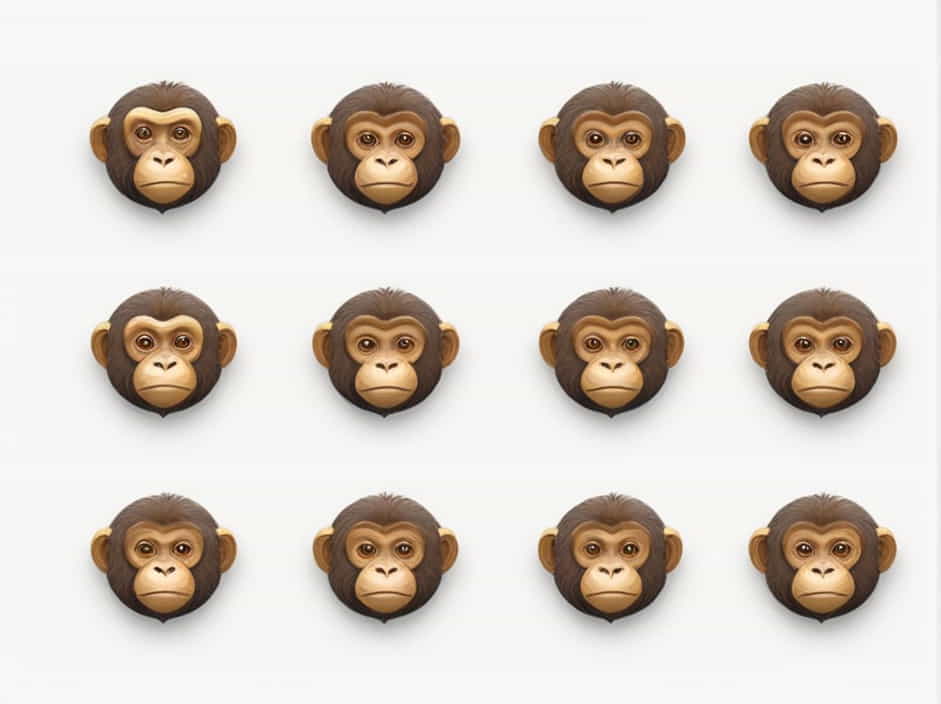The study of ancestral primates gives us a glimpse into the evolutionary history that led to modern apes and humans. Among the many primates that existed millions of years ago, some were more ape-like than others, sharing traits such as larger brains, forward-facing eyes, and grasping hands.
But which ancestral primates were the most ape-like? How did they contribute to the evolution of modern great apes and humans? In this topic, we’ll explore some of the key ape-like primates from history, their characteristics, and their role in primate evolution.
What Defines an Ape-Like Ancestral Primate?
Before identifying the most ape-like ancestral primates, it’s important to define what makes a primate ape-like. Unlike early monkeys, ape-like primates tend to have:
- Larger brain size compared to body mass.
- More flexible shoulders and arms, allowing for climbing and swinging.
- Shorter snouts and flatter faces, with forward-facing eyes for better depth perception.
- Lack of a tail, which is a defining trait of apes.
With these traits in mind, let’s look at some of the most important ape-like primates in evolutionary history.
1. Proconsul: The Early Ape-Like Primate
One of the most well-known ape-like ancestral primates is Proconsul, which lived around 18–25 million years ago during the Miocene epoch.
Characteristics of Proconsul
- Size: Varied from small (like a gibbon) to large (like a chimpanzee).
- Brain: Larger than earlier primates, but smaller than modern apes.
- Body Structure: Had a flexible back and limbs suited for tree climbing.
- Tail: Unlike monkeys, Proconsul had no tail, making it more similar to apes.
Why Is Proconsul Important?
Proconsul is considered an important link between monkeys and apes. It had features of both groups but is often classified as an early ape due to its tailless body and limb flexibility.
2. Dryopithecus: The Arboreal Ape Ancestor
Dryopithecus lived around 9–12 million years ago and is believed to be closely related to modern great apes.
Characteristics of Dryopithecus
- Arboreal Lifestyle: Spent most of its time in trees, moving by brachiation (swinging from branches).
- Limb Structure: Had long arms and curved fingers, ideal for climbing.
- Skull Shape: More similar to modern apes, with a flatter face and large brain.
Why Is Dryopithecus Important?
Dryopithecus is significant because it shares many physical traits with modern chimpanzees and gorillas. Its arboreal adaptations suggest that great apes developed their swinging and climbing abilities early in their evolution.
3. Sivapithecus: The Link to Orangutans
Sivapithecus lived around 8–12 million years ago and is considered a possible ancestor of modern orangutans.
Characteristics of Sivapithecus
- Facial Structure: Its skull and face closely resemble orangutans, with a broad, flat face and projecting jaw.
- Climbing Ability: Adapted for grasping and climbing, but likely moved on the ground as well.
- Diet: Ate fruits, leaves, and soft plant materials, much like modern great apes.
Why Is Sivapithecus Important?
Sivapithecus helps scientists understand the evolutionary path of orangutans, showing that great apes evolved in different directions millions of years ago.
4. Pierolapithecus: The Common Ancestor of Great Apes?
Pierolapithecus lived around 12.5 million years ago and may be the last common ancestor of gorillas, chimpanzees, and humans.
Characteristics of Pierolapithecus
- Posture: Had a more upright stance, unlike earlier tree-dwelling primates.
- Limb Adaptations: Short fingers but strong wrist and shoulder joints, suggesting early adaptations for climbing.
- Facial Features: Flatter face with a large brain cavity, similar to modern great apes.
Why Is Pierolapithecus Important?
This primate provides crucial evidence of how great apes developed upright movement, a key step in human evolution.
5. Ardipithecus: The Human-Ancestral Ape
Ardipithecus, which lived around 4.4 million years ago, is one of the earliest known human ancestors.
Characteristics of Ardipithecus
- Bipedal and Arboreal: Could walk on two legs but also climbed trees efficiently.
- Body Structure: Had a small brain but a more human-like pelvis, allowing upright movement.
- Facial Features: Less protruding snout, more human-like than earlier apes.
Why Is Ardipithecus Important?
Ardipithecus marks the transition from ape-like primates to early human ancestors, showing the first steps towards bipedalism.
How Did Ape-Like Primates Influence Modern Apes and Humans?
The evolution of modern great apes and humans was shaped by these early primates. Their adaptations helped define the unique traits of today’s primates:
- Loss of tail → Improved balance and mobility in trees.
- Stronger limbs and shoulders → Enabled climbing and brachiation.
- Larger brains → Allowed for problem-solving and social behavior.
- Upright posture → Led to bipedal movement in human ancestors.
Each of these ape-like primates played a role in shaping the diverse primate species we see today.
The most ape-like ancestral primates, such as Proconsul, Dryopithecus, Sivapithecus, Pierolapithecus, and Ardipithecus, helped bridge the gap between monkeys, apes, and humans.
These primates had unique adaptations that set the stage for the development of great apes and early hominins. Their evolutionary contributions continue to be studied, offering valuable insights into how humans and apes share a common past.
Understanding these early primates not only explains our origins but also highlights the incredible journey of evolution that led to the primates we see today.
